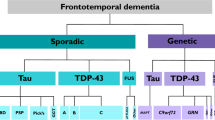Abstract
The α-amino-3-hydroxy-5-methyl-4-propionic acid (AMPA) receptors are important for glutamate synaptic transmission in the central nervous system. Glutamate receptor, ionotropic, AMPA receptor 1 gene (GRIA1) belongs to the family of AMPA receptors. There is increasing evidence that AMPA receptors dysfunction may be related to an increased susceptibility to schizophrenia. The aim of this study was therefore to investigate whether genetic polymorphisms of GRIA1 are associated with schizophrenia and their clinical symptoms (hallucinations and delusions) in Korean population. Five single nucleotide polymorphisms (rs1428920, rs1552834, rs1422889, rs10035143, and rs2926835) of the GRIA1 were genotyped in 218 schizophrenia patients and 380 healthy controls, using a direct sequencing. All patients were evaluated by the Operational Criteria Checklist for Psychotic Illness. The genotype and allelic frequencies of rs1428920 and rs2926835 showed significant association between schizophrenia and controls (rs1428920, permutation p = 0.008, 0.008; rs2926835, permutation p = 0.038, 0.041, respectively). A significantly increased risk of schizophrenia was associated with the A allele of rs1428920 and rs2926835 of GRIA1. Furthermore, we found that rs1428920 was weakly associated with hallucinations of schizophrenia, but this significance disappeared after multiple testing (permutation p = 0.119). These results suggest that GRIA1 polymorphism may have influence upon the risk of developing schizophrenia.
Similar content being viewed by others
References
Lin CH, Lane HY, Tsai GE (2012) Glutamate signaling in the pathophysiology and therapy of schizophrenia. Pharmacol Biochem Behav 100:665–677
Newpher TM, Ehlers MD (2008) Glutamate receptor dynamics in dendritic microdomains. Neuron 58:472–497
Santos SD, Carvalho AL, Caldeira MV, Duarte CB (2009) Regulation of AMPA receptors and synaptic plasticity. Neuroscience 158:105–125
Stahl SM (2007) The genetics of schizophrenia converge upon the NMDA glutamate receptor. CNS Spectr 12:583–588
Beneyto M, Kristiansen LV, Oni-Orisan A, McCullumsmith RE, Meador-Woodruff JH (2007) Abnormal glutamate receptor expression in the medial temporal lobe in schizophrenia and mood disorders. Neuropsychopharmacology 32:1888–1902
Beneyto M, Meador-Woodruff JH (2006) Lamina-specific abnormalities of AMPA receptor trafficking and signaling molecule transcripts in the prefrontal cortex in schizophrenia. Synapse 60:585–598
Dracheva S, McGurk SR, Haroutunian V (2005) mRNA expression of AMPA receptors and AMPA receptor binding proteins in the cerebral cortex of elderly schizophrenics. J Neurosci Res 79:868–878
O’Connor JA, Muly EC, Arnold SE, Hemby SE (2007) AMPA receptor subunit and splice variant expression in the DLPFC of schizophrenic subjects and rhesus monkeys chronically administered antipsychotic drugs. Schizophr Res 90:28–40
Choi KH, Zepp ME, Higgs BW, Weickert CS, Webster MJ (2009) Expression profiles of schizophrenia susceptibility genes during human prefrontal cortical development. J Psychiatry Neurosci 34:450–458
Shi S, Hayashi Y, Esteban JA, Malinow R (2001) Subunit-specific rules governing AMPA receptor trafficking to synapses in hippocampal pyramidal neurons. Cell 105:331–343
Lewis CM, Levinson DF, Wise LH et al (2003) Genome scan meta-analysis of schizophrenia and bipolar disorder, part II: schizophrenia. Am J Hum Genet 73:34–48
O’Connor JA, Hemby SE (2007) Elevated GRIA1 mRNA expression in Layer II/III and V pyramidal cells of the DLPFC in schizophrenia. Schizophr Res 97:277–288
Wiedholz LM, Owens WA, Horton RE et al (2008) Mice lacking the AMPA GluR1 receptor exhibit striatal hyperdopaminergia and ‘schizophrenia-related’ behaviors. Mol Psychiatry 13:631–640
McGuffin P, Farmer A, Harvey I (1991) A polydiagnostic application of operational criteria in studies of psychotic illness. Development and reliability of the OPCRIT system. Arc Gen Psychiatry 48:764–770
Fanous AH, van den Oord EJ, Riley BP et al (2005) Relationship between a high-risk haplotype in the DTNBP1 (dysbindin) gene and clinical features of schizophrenia. Am J Psychiatry 162:1824–1832
Barrett JC, Fry B, Maller J, Daly MJ (2005) Haploview: analysis and visualization of LD and haplotype maps. Bioinformatics 21:263–265
Gabriel SB, Schaffner SF, Nguyen H et al (2002) The structure of haplotype blocks in the human genome. Science 296:2225–2229
Fitzgerald PJ, Barkus C, Feyder M et al (2010) Does gene deletion of AMPA GluA1 phenocopy features of schizoaffective disorder? Neurobiol Dis 40:608–621
Takahata R, Moghaddam B (2003) Activation of glutamate neurotransmission in the prefrontal cortex sustains the motoric and dopaminergic effects of phencyclidine. Neuropsychopharmacology 28:1117–1124
Magri C, Gardella R, Barlati SD et al (2006) Glutamate AMPA receptor subunit 1 gene (GRIA1) and DSM-IV-TR schizophrenia: a pilot case-control association study in an Italian sample. Am J Med Genet B Neuropsychiatr Genet 141B:287–293
Leon CA, Schumacher J, Kluck N et al (2011) Association study of the GRIA1 and CLINT1 (Epsin 4) genes in a German schizophrenia sample. Psychiatr Genet 21:114
Crisafulli C, Chiesa A, De Ronchi D et al (2012) Influence of GRIA1, GRIA2 and GRIA4 polymorphisms on diagnosis and response to antipsychotic treatment in patients with schizophrenia. Neurosci Lett 506:170–174
Kerner B, Jasinska AJ, DeYoung J, Almonte M, Choi OW, Freimer NB (2009) Polymorphisms in the GRIA1 gene region in psychotic bipolar disorder. Am J Med Genet B Neuropsychiatr Genet 150B:24–32
Shi J, Badner JA, Hattori E et al (2008) Neurotransmission and bipolar disorder: a systematic family-based association study. Am J Med Genet B Neuropsychiatr Genet 147B:1270–1277
Fanous AH, Kendler KS (2005) Genetic heterogeneity, modifier genes, and quantitative phenotypes in psychiatric illness: searching for a framework. Mol Psychiatry 10:6–13
Cardno AG, Rijsdijk FV, Murray RM, McGuffin P (2008) Twin study refining psychotic symptom dimensions as phenotypes for genetic research. Am J Med Genet B Neuropsychiatr Genet 147B:1213–1221
Kerner B, Brugman DL, Freimer NB (2007) Evidence of linkage to psychosis on chromosome 5q33–34 in pedigrees ascertained for bipolar disorder. Am J Med Genet B Neuropsychiatr Genet 144B:74–78
Acknowledgments
This work was supported by a Grant from the Kyung Hee University (KHU-20090641).
Conflict of interest
None.
Author information
Authors and Affiliations
Corresponding author
Rights and permissions
About this article
Cite this article
Kang, W.S., Park, J.K., Kim, S.K. et al. Genetic variants of GRIA1 are associated with susceptibility to schizophrenia in Korean population. Mol Biol Rep 39, 10697–10703 (2012). https://doi.org/10.1007/s11033-012-1960-x
Received:
Accepted:
Published:
Issue Date:
DOI: https://doi.org/10.1007/s11033-012-1960-x




